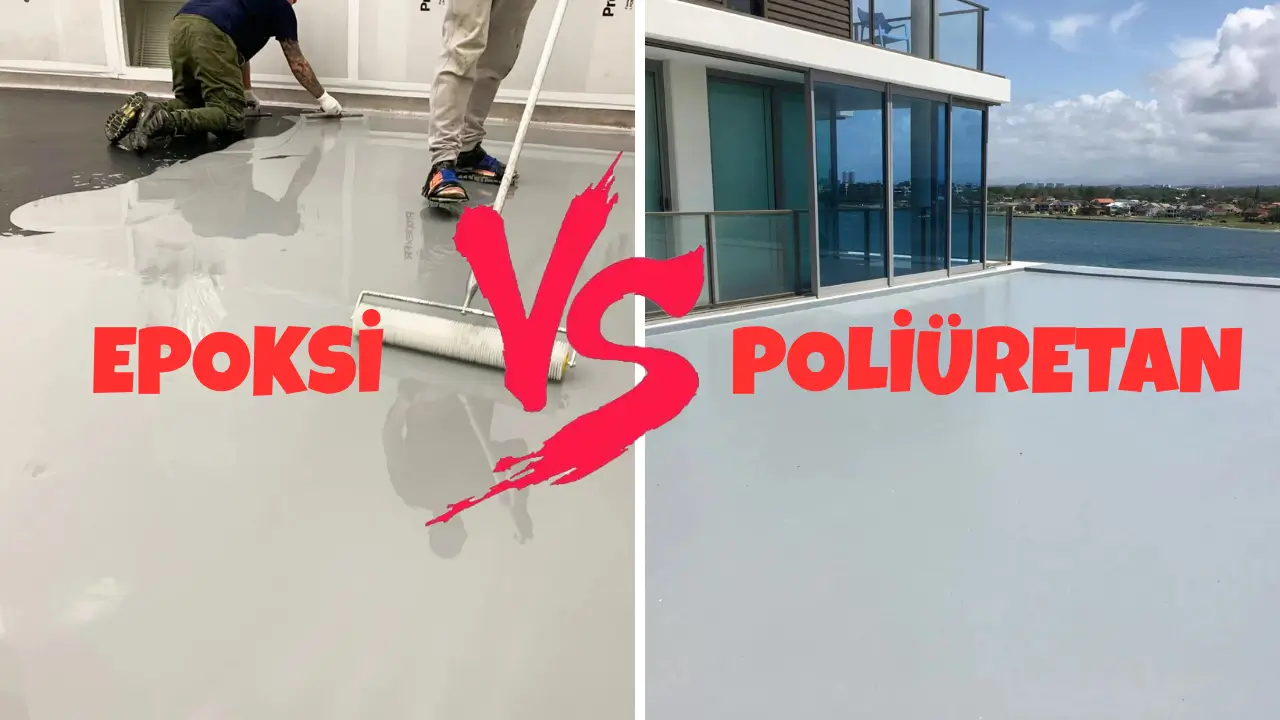
When it comes to modern surface coatings and flooring systems, epoxy and polyurethane are among the most trusted and widely applied solutions in the construction industry. From industrial factories and warehouses to parking garages, commercial stores, and even exposed terraces, these materials provide durability, aesthetic appeal, and long-term performance when selected and applied correctly.
However, no two projects are the same. Factors such as substrate condition, traffic intensity, climatic exposure, and application requirements must all be considered when choosing between epoxy and polyurethane systems.
While these two systems share several performance traits, they differ significantly in terms of mechanical properties, chemical resistance, flexibility, and UV stability. Understanding these differences is key to maximizing the return on investment and ensuring a trouble-free application over the long term.
In this guide, we break down the eight key differences between epoxy and polyurethane systems to help you make the right choice for your next flooring or waterproofing project.
1. Chemical Composition & Hardness
Epoxy is a two-component thermoset resin that cures through a chemical reaction to form a rigid, high-strength surface. It is particularly suited for indoor environments with high mechanical loads and static conditions.
Polyurethane, on the other hand, is a flexible polymer-based system. Thanks to its elastic molecular structure, it offers excellent crack-bridging ability and adaptability to dynamic surfaces—making it ideal for applications exposed to thermal expansion, substrate movement, or vibration.
2. Elasticity & Crack-Bridging Capability
The most notable difference lies in flexibility. Epoxy systems are very hard, providing excellent strength but limited tolerance to structural movement or cracks.
Polyurethane systems are highly elastic, enabling them to bridge micro-cracks and prevent water ingress. This makes them particularly suitable for terraces, exposed parking decks, and roof structures.
3. UV Resistance
Epoxy coatings are UV-sensitive and tend to yellow or chalk under direct sunlight. For this reason, they are primarily used in interior spaces or areas not exposed to UV radiation.
Polyurethane coatings offer superior UV resistance, retaining both color and surface integrity even under continuous sun exposure. This feature makes them the preferred choice for outdoor applications.
4. Chemical Resistance
Epoxy systems exhibit excellent resistance to aggressive chemicals such as acids, oils, and solvents. This makes them ideal for industrial plants, chemical processing areas, and workshops.
While polyurethane also resists a broad range of chemicals, it generally falls short of epoxy’s chemical resistance spectrum. However, its weather resistance and elasticity give it a distinct edge in external applications.
5. Abrasion & Impact Resistance
Epoxy flooring offers superior abrasion resistance, making it suitable for heavy traffic zones with frequent forklift movement or high pedestrian loads.
Polyurethane systems are more impact-resistant due to their elasticity, reducing the risk of cracking. However, under constant heavy loading or abrasive wear, epoxy tends to perform better.
6. Application Areas
Epoxy Is Commonly Used In:
- Warehouses & production halls
- Indoor parking structures
- Laboratories, hospitals, and showrooms
- Industrial loading zones
- Decorative high-gloss floors
Polyurethane Is Ideal For:
- Rooftop and outdoor parking decks
- Terrace and balcony waterproofing
- Exposed concrete roofs
- Walkways and pedestrian zones
- Outdoor applications exposed to weather
7. Application Sensitivity
Both systems require professional application and proper surface preparation. Epoxy tends to cure faster and is more sensitive to ambient temperature during installation.
Polyurethane is more tolerant to moisture and temperature fluctuations, making it more forgiving in outdoor or high-humidity environments.
8. Cost Consideration
Costs vary based on product type, layer thickness, and project scale.
- Epoxy coatings are generally more cost-effective per square meter.
- Polyurethane systems are typically slightly more expensive due to their advanced formulation (e.g., UV-resistant components) and higher application complexity.
⚠️ Selecting the wrong system for the application can result in premature failure, making an initially cheaper solution more expensive over time due to repairs or full reapplication.
Epoxy vs. Polyurethane – Summary Comparison Table
| Property | Epoxy | Polyurethane |
|---|---|---|
| Elasticity | Low (Rigid) | High (Flexible) |
| Abrasion Resistance | Excellent | Moderate to High |
| Chemical Resistance | Excellent | Moderate to High |
| UV Resistance | Low (Yellows under UV) | High (UV-Stable) |
| Waterproofing Ability | Moderate | High (Crack-Bridging) |
| Recommended Use | Indoor floors, primers | Roofs, balconies, terraces |
| Finish Options | Glossy, decorative finishes | Matte/Gloss, UV-stable colors |
Conclusion: Which One Should You Choose?
Both epoxy and polyurethane systems have their unique strengths.
- Epoxy is the best choice for interior flooring that demands rigidity, high chemical resistance, and a glossy decorative finish.
- Polyurethane is the go-to option for exterior surfaces where flexibility, UV stability, and crack-bridging capabilities are essential.
Every project requires a tailored approach. Factors such as substrate condition, exposure environment, and functional requirements must guide your decision. Consulting with experts before installation ensures that you get the most out of both material and labor investment.
Tailored Solutions by Dryfix
At Dryfix, we offer certified epoxy and polyurethane systems engineered for durability and performance. Whether you’re working on an industrial floor or a rooftop waterproofing project, our team provides technical consultancy, on-site support, and custom solutions to meet your project’s specific needs.
Contact us today to discuss your project and discover the most effective surface protection system for your application.
